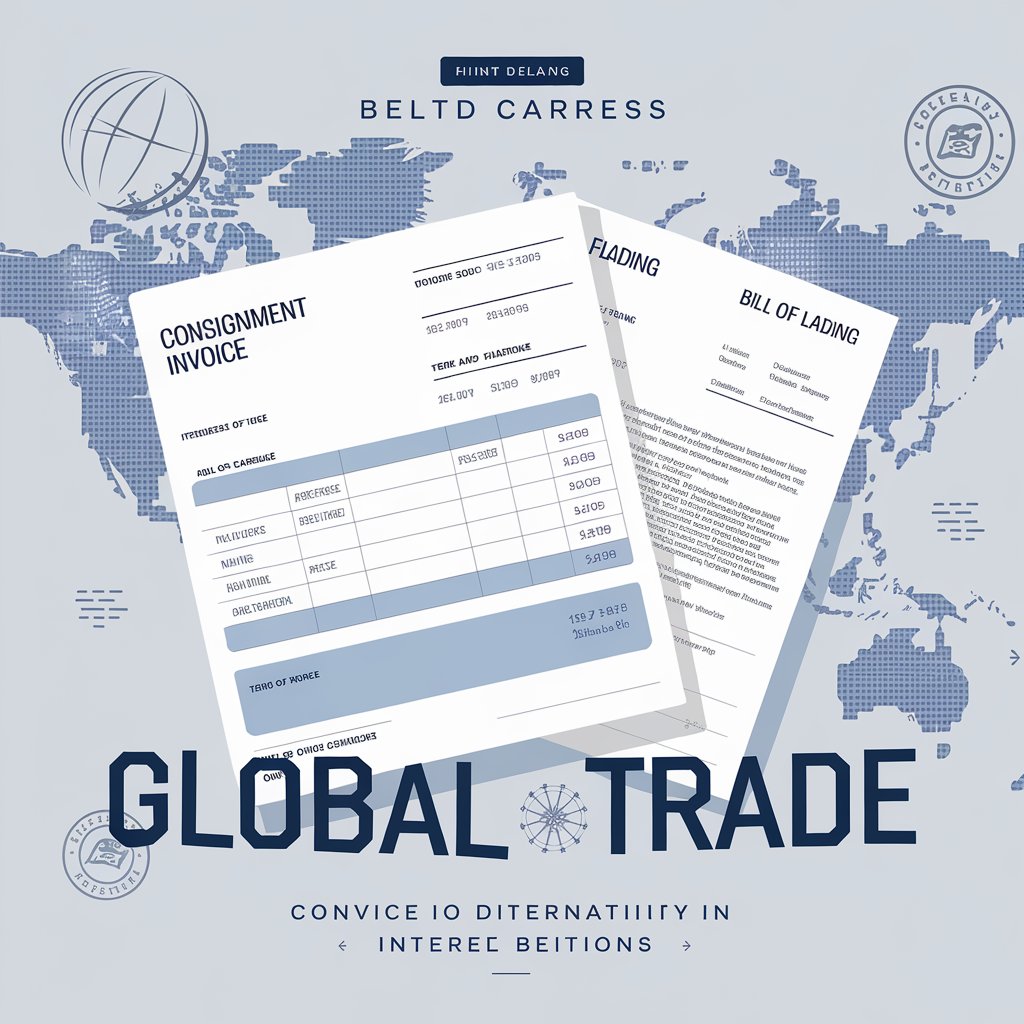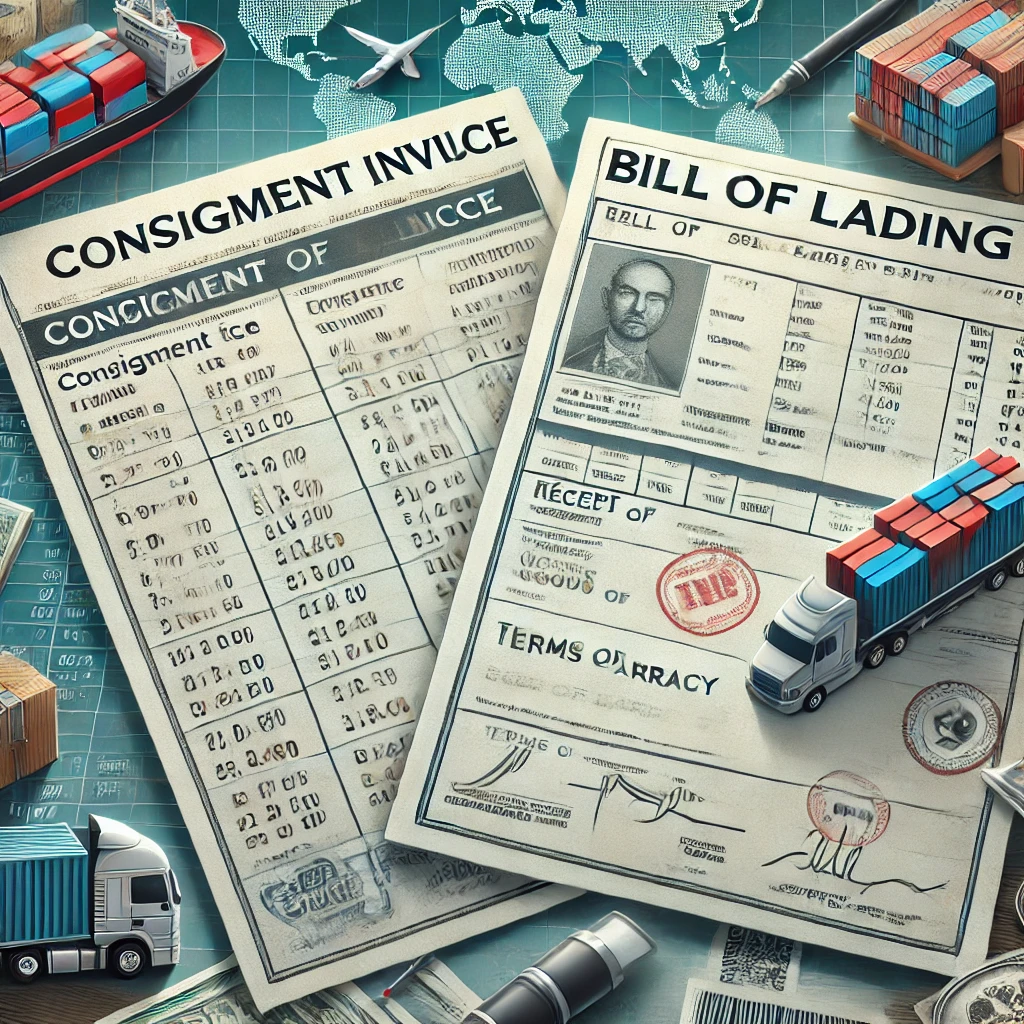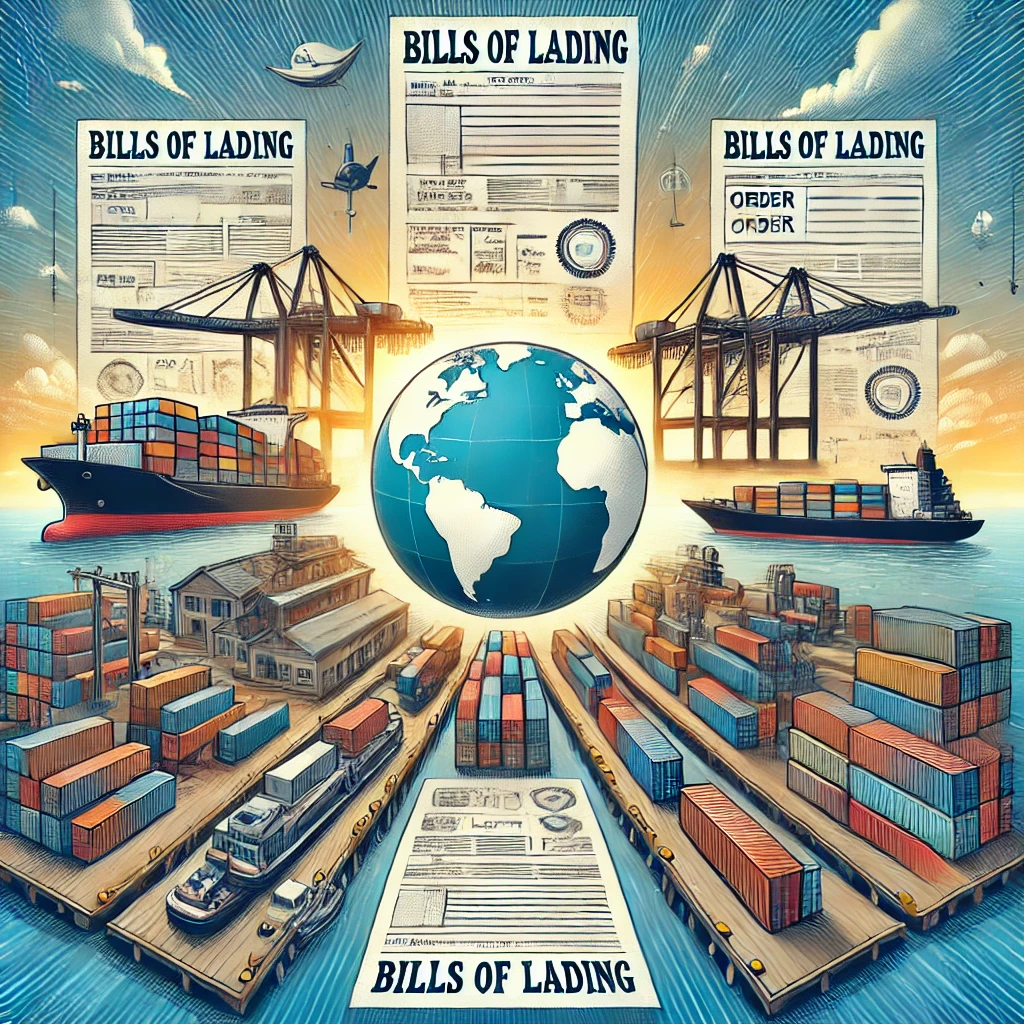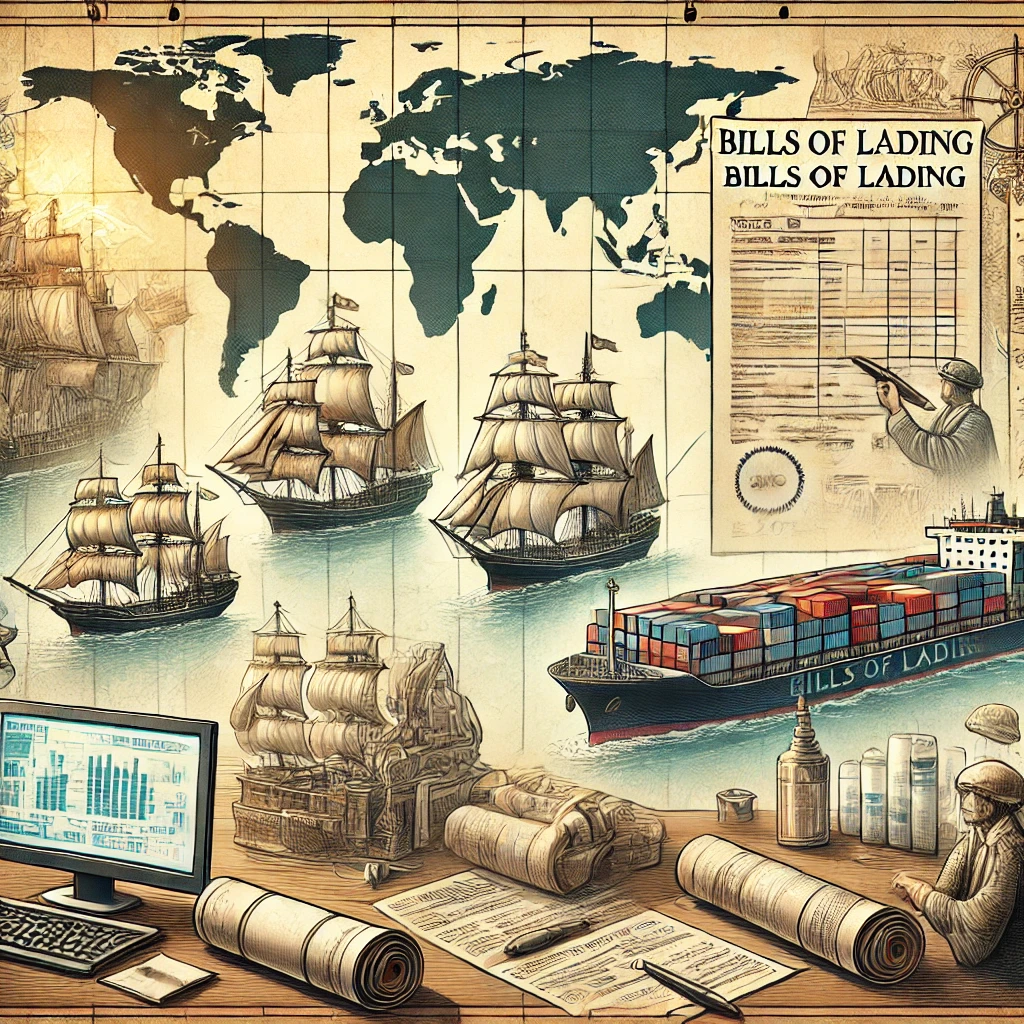Consignment Invoice vs Bill of Lading: Essential Shipping Documents Explained

What is a Consignment Invoice?
A consignment invoice is a commercial document issued by the seller (consignor) to the buyer (consignee) in international trade. It details the goods being shipped, their value, and other pertinent information for customs clearance and payment purposes.
Key features of a consignment invoice:
- Lists items being shipped, including quantity and price
- Provides total value of the shipment
- Includes terms of sale and payment
- Essential for customs clearance and determining duties
- May include shipping details and incoterms
Importance of Consignment Invoices in International Trade
Consignment invoices play a crucial role in facilitating smooth international transactions:
- Customs Clearance: They provide customs officials with necessary information to assess duties and taxes.
- Payment Processing: Banks often require consignment invoices for letter of credit transactions.
- Import/Export Compliance: They help ensure adherence to trade regulations and restrictions.
- Inventory Management: Consignment invoices assist in tracking goods across international borders.
- Dispute Resolution: In case of discrepancies, these invoices serve as important reference documents.
What is a Consignment Invoice?
A bill of lading, often abbreviated as BOL, is a legal document issued by a carrier to a shipper. It serves multiple crucial functions in the Consignment Invoice vs Bill of Lading shipping process.
Primary functions of a bill of lading:
- Receipt of goods: Confirms the carrier has received the cargo for shipment
- Contract of carriage: Outlines the terms of agreement between shipper and carrier
- Document of title: Represents ownership of the goods being transported
Types of Bills of Lading
Understanding the various types of BOLs is crucial for efficient shipping operations:
- Straight Bill of Lading:
- Non-negotiable
- Specifies a consignee
- Used when payment has been made or isn’t required
- Order Bill of Lading:
- Negotiable
- Allows transfer of ownership
- Often used in letter of credit transactions
- Bearer Bill of Lading:
- Transferable without endorsement
- Whoever holds the document owns the goods
- Rarely used due to high risk of theft or loss
- Clean Bill of Lading:
- Indicates goods were received in good condition
- No adverse comments from the carrier
- Claused Bill of Lading:
- Also known as a “dirty” BOL
- Contains notes about damage or deficiencies in the shipment
- Through Bill of Lading:
- Covers transportation by at least two different modes
- Useful for multimodal transport
- Electronic Bill of Lading (eBOL):
- Digital version of the traditional paper BOL
- Gaining popularity due to increased efficiency and reduced paperwork
The Evolution of Bills of Lading
The concept of a bill of lading has a rich history dating back to medieval times:
- 11th Century: Earliest known use in Mediterranean maritime trade
- 16th Century: Became a standardized document in European shipping
- 19th Century: Recognized as a document of title in common law
- 20th Century: International conventions standardized BOL practices
- 21st Century: Introduction of electronic BOLs for increased efficiency
Why Both Documents are Essential
While distinct, both the consignment invoice and bill of lading play vital roles in international shipping:
Importance of Consignment Invoice:
- Facilitates customs clearance
- Helps determine import duties and taxes
- Provides detailed description of goods for buyer and authorities
- Serves as proof of sale for payment purposes
- Aids in foreign exchange control in some countries
Importance of Bill of Lading:
- Acts as evidence of contract between shipper and carrier
- Provides proof of ownership of goods
- Essential for releasing cargo at destination
- Can be used as collateral in trade finance
- Helps in tracking the shipment’s progress

Common Questions About Consignment Invoices and Bills of Lading
Who issues a bill of lading?
A bill of lading is issued by the carrier or their agent after receiving the goods for shipment. This could be a shipping line Consignment Invoice vs Bill of Lading, freight forwarder, or trucking company, depending on the mode of transport.
What information does a generic bill of lading contain?
A generic BOL typically includes:
- Shipper and consignee details
- Description of goods
- Quantity and weight of cargo
- Vessel name and voyage number (for sea freight)
- Port of loading and discharge
- Terms of carriage
- Date of issue
- Signature of carrier’s agent
How does a bill of lading differ from an invoice?
While both are important shipping documents, they serve different purposes:
- A bill of lading is a transport document that serves as a receipt, contract of carriage, and sometimes a document of title.
- An invoice is a commercial document that lists the goods sold, their prices, and payment terms.
The BOL is crucial for the physical movement of goods, while the invoice is essential for the financial aspects of the transaction.
Can you provide some BOL examples?
Common types of BOL include:
- Ocean Bill of Lading for sea freight
- Air Waybill for air cargo
- Straight Bill of Lading for direct delivery to a named consignee
- Multimodal Bill of Lading for shipments using multiple transport modes
- Switch Bill of Lading used to change the details of the original BOL
What does “BOL” stand for in shipping?
In shipping, “BOL” is an abbreviation for “Bill of Lading.”
How can I obtain or print a BOL?
To obtain or print a BOL:
- Contact your carrier or freight forwarder
- Use online shipping platforms that generate BOLs
- Create a generic BOL using templates available from logistics associations
- Utilize specialized logistics software for automated BOL generation
What is the difference between a bill and an invoice in shipping?
In shipping:
- A bill typically refers to the Bill of Lading, which is a transport document.
- An invoice is a commercial document detailing the sale of goods.
While both contain information about the shipment, they serve different purposes and are issued by different parties.
How do electronic Bills of Lading (eBOLs) work?
Electronic Bills of Lading are digital versions of traditional paper BOLs. They work by:
- Using secure platforms to create and transmit the document
- Employing digital signatures for authentication
- Utilizing blockchain technology for enhanced security and traceability
- Allowing for quick transfers of ownership and updates to shipping information
eBOLs offer advantages such as reduced paperwork, faster processing, and improved data accuracy.

Best Practices for Handling Consignment Invoices and Bills of Lading
To ensure smooth shipping operations, consider these best practices:
- Accuracy is Key: Double-check all information on both documents for correctness.
- Timely Issuance: Prepare and send documents promptly to avoid delays.
- Secure Storage: Keep both digital and physical copies of documents safely stored.
- Use Technology: Leverage logistics software for efficient document creation and management.
- Stay Informed: Keep up-to-date with international trade regulations and document requirements.
- Consistency: Ensure information is consistent across all shipping documents.
- Clear Communication: Maintain open lines of communication with all parties involved in the shipment.
The Role of Technology in Shipping Documentation
The digital revolution has significantly impacted the way shipping Consignment Invoice vs Bill of Lading documents are created, processed, and managed:
- Electronic Data Interchange (EDI): Allows for the electronic exchange of shipping information between parties.
- Cloud-Based Systems: Enable real-time access to shipping documents from anywhere.
- Blockchain Technology: Enhances security and traceability of shipping documents.
- Artificial Intelligence: Aids in automating document creation and verification processes.
- Mobile Applications: Facilitate on-the-go access and management of shipping documents.

Legal Considerations for Consignment Invoices and Bills of Lading
Understanding the legal implications of these documents is crucial:
- Contractual Obligations: Both documents create legally binding agreements between parties.
- Liability: The BOL defines the carrier’s liability for the goods during transport.
- Jurisdiction: In case of disputes, the BOL often specifies the governing law and jurisdiction.
- Incoterms: These international commercial terms, often referenced in consignment invoices, affect Consignment Invoice vs Bill of Lading the responsibilities and risks of buyers and sellers.
- Regulatory Compliance: Both documents must comply with national and international trade regulations.
The Impact of COVID-19 on Shipping Documentation
The global pandemic has accelerated certain trends in shipping documentation:
- Increased Digitization: Greater adoption of electronic documents to reduce physical contact.
- Remote Processing: More companies processing shipping documents remotely.
- Flexibility: Adaptations to documentation processes to accommodate disrupted supply chains.
- Health Certifications: Additional documentation requirements related to health and safety.
Conclusion
Understanding the distinctions and importance of consignment invoices and bills of lading is crucial for anyone involved in international trade or logistics. While they may seem similar at first glance, each document plays a unique and vital role in the shipping process. By mastering the use of these documents, businesses can ensure smoother customs clearance, more secure shipments, and more efficient international trade operations.
Remember, whether you’re dealing with a generic BOL, a specialized consignment invoice, or any other shipping document, attention to detail and accuracy are paramount. Always consult with logistics professionals or legal advisors if you’re unsure about any aspect of these crucial documents.
As the world of international trade continues to evolve, staying informed about the latest developments in shipping documentation is essential for success in global commerce.
How Linbis Streamlines Shipping Documentation
In the complex world of international shipping, managing documentation can be a daunting task. This is where Linbis comes in, offering innovative solutions to streamline the creation and management of crucial shipping documents like consignment invoices and bills of lading.
Linbis’s Comprehensive Document Management System
Linbis provides a state-of-the-art logistics software platform that simplifies the entire process of creating, editing, and managing shipping documents:
- Automated Document Generation:
- Linbis’s system can automatically generate both consignment invoices and bills of lading based on shipment details entered into the platform.
- This automation reduces the risk of human error and saves significant time in document preparation.
- Customizable Templates:
- The platform offers a range of customizable templates for various types of BOLs and consignment invoices.
- Users can tailor these templates to meet their specific needs and comply with different regional requirements.
- Integration with Other Systems:
- Linbis’s software integrates seamlessly with other business systems like ERP and CRM platforms.
- This integration ensures consistency of information across all business processes and eliminates the need for manual data entry.
- Electronic Document Exchange:
- The platform supports electronic Bills of Lading (eBOLs) and digital consignment invoices.
- This feature facilitates faster document transmission and reduces paper usage, contributing to more sustainable business practices.
- Real-time Updates and Tracking:
- Any changes or updates to shipping documents are reflected in real-time across the system.
- Users can track the status of their documents throughout the shipping process.
- Compliance Checks:
- Linbis’s system includes built-in compliance checks to ensure that all generated documents meet international trade regulations and standards.
- This feature helps businesses avoid costly delays and penalties due to non-compliance.
- Secure Document Storage:
- All documents created and managed through Linbis are securely stored in the cloud.
- This ensures easy access for authorized users while maintaining the confidentiality and integrity of sensitive shipping information.
- Multi-user Collaboration:
- The platform allows multiple users to collaborate on document creation and management.
- Role-based access controls ensure that users only have access to the information and functions relevant to their responsibilities.
- Mobile Accessibility:
- Linbis offers mobile apps that allow users to view, approve, and manage shipping documents on the go.
- This feature is particularly useful for businesses with global operations across different time zones.
- Analytics and Reporting:
- The system provides powerful analytics tools to help businesses gain insights from their shipping documentation processes.
- Custom reports can be generated to track efficiency, identify bottlenecks, and inform strategic decisions.
By leveraging Linbis’s advanced features, businesses can significantly reduce the time and effort spent on managing shipping documentation. This not only increases operational efficiency but also minimizes errors, ensures compliance, and ultimately contributes to smoother international trade operations.
Whether you’re dealing with complex multimodal shipments or high-volume exports, Linbis provides the tools and support needed to master the intricacies of shipping documentation. With Linbis, creating and managing consignment invoices and bills of lading becomes a streamlined, error-free process, allowing businesses to focus on growth and customer satisfaction.
